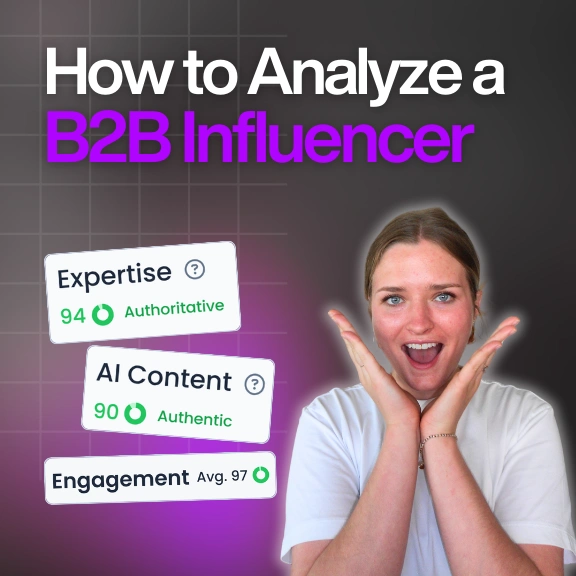Finden
Ergreifen Sie die richtigen Schritte, um die besten YouTuber für Ihre Marke zu finden
Engagieren
Führen Sie Kampagnen durch, verwalten Sie Creator und verfolgen Sie Ergebnisse, die auf Sie zurückgehen
Einblicke
Holen Sie sich jederzeit und überall die Einblicke, die Sie über jeden YouTuber oder jede Marke benötigen
Blog und Artikel
Deine ultimative Ressource für die creator Economy
Methodik und Rankings
Über Favikon, Rankings, Tools und vieles mehr.
Einblicke
Das Rezept hinter den viralen und begehrten Rankings von Favikon.
Kostenlose Tools zur Unterstützung Ihrer Influencer-Marketing-Workflows.
Sehen Sie sich die Erfolgsgeschichten der Favikon-Nutzer an.
Erhalten Sie Zugriff auf alle Favikon-Rankings.
Werden Sie ein Partner
Werden Sie ein Affiliate
Über das Team hinter Favikon
Der Ort zum Reden Schöpferökonomie, zusammen


Ausgewählte Rankings

Here is the Top 50 Rising Video Creators on LinkedIn. Video is quickly becoming the platform’s most powerful format, with creators gaining more reach and engagement than ever. As Gen Z grows its presence and tools like BrandLink and Thought Leader Ads support content creation, LinkedIn is doubling down on video. This ranking, made in partnership with OpusClip, celebrates the creators leading this shift and aims to inspire anyone ready to start sharing through video.

Here is the Top 50 Rising Video Creators on LinkedIn. Video is quickly becoming the platform’s most powerful format, with creators gaining more reach and engagement than ever. As Gen Z grows its presence and tools like BrandLink and Thought Leader Ads support content creation, LinkedIn is doubling down on video. This ranking, made in partnership with OpusClip, celebrates the creators leading this shift and aims to inspire anyone ready to start sharing through video.
So erkennen Sie gefälschte Follower und Engagement in sozialen Medien
Lernen Sie, falsche Follower und Interaktionen zu identifizieren, um zu vermeiden, dass Marketingausgaben für unauthentische Influencer verschwendet werden. Dieser Leitfaden behandelt wichtige Warnsignale und Erkennungstools für echte Social-Media-Partnerschaften.

.png)

Josie Renna is a content strategy expert with a passion for helping creators navigate the ever-evolving digital landscape. Specializing in effective content creation techniques and platform-specific strategies, Josie provides insights to empower creators and brands to thrive online. With a deep understanding of algorithm dynamics and audience engagement, Josie shares actionable tips for optimizing content performance across various platforms.
Check Brand DealsSo erkennen Sie gefälschte Follower und Engagement in sozialen Medien
In der heutigen digitalen Landschaft, in der Influencer-Marketing zu einem 21,1 Milliarden US-Dollar Industrie, die Authentizität und Engagement der Follower in den sozialen Netzwerken war noch nie so kritisch. Angesichts der Tatsache, dass Marken stark in Influencer-Partnerschaften investieren, die Fähigkeit, zwischen echten und falschen Followern zu unterscheiden kann über Erfolg oder Misserfolg von Marketingkampagnen entscheiden und den Ruf der Marke schützen.
Schau dir diesen Guideflow an, um zu sehen, wie er funktioniert:
Das Fake-Follower-Problem verstehen
Die Zunahme von gefälschten Followern und Interaktionen stellt heute eine der größten Herausforderungen dar, vor denen digitale Vermarkter heute stehen. Branchenforschungen zufolge sind es ca. 15% aller Social-Media-Konten sind gefälscht, wobei auf einigen Plattformen noch höhere Raten betrügerischer Aktivitäten zu verzeichnen sind.
Keith Weed, ehemaliger CMO von Unilever, hat sich besonders lautstark zu diesem Thema geäußert und erklärt, dass „der Mangel an Transparenz und die Prävalenz falscher Follower und das Engagement in der Influencer-Marketing-Branche“ hat große Marken dazu veranlasst, ihre Partnerschaften genauer zu prüfen. Dieses branchenweite Problem hat zu einer erhöhten Nachfrage nach Verifizierungstools und manuellen Auditprozessen geführt.
Die finanziellen Auswirkungen
Falsche Follower führen nicht nur Kennzahlen in die Irre; sie wirken sich direkt auf den ROI aus. Wenn Marken Influencer auf der Grundlage der Followerzahl oder der Engagement-Raten bezahlen, Falsche Kennzahlen können zu verschwendeten Marketingbudgets und einer schlechten Kampagnenleistung führen. Branchenexperten schätzen, dass Marken aufgrund betrügerischer Influencer-Partnerschaften jährlich Millionen verlieren.
Wichtige rote Fahnen, auf die Sie achten sollten
Verdächtige Engagement-Muster

Eines der aussagekräftigsten Anzeichen für falsches Engagement sind unnatürlich konsistente Muster. Das tatsächliche Engagement schwankt natürlich je nach Qualität der Inhalte, Zeitpunkt und Interesse des Publikums. Falsches Engagement zeigt jedoch oft eine verdächtige Konsistenz zwischen den Posts.
Achte auf diese Warnzeichen:
- Engagement bewertet das bleiben genau gleich über mehrere Beiträge hinweg
- Kommentare, die angezeigt werden innerhalb weniger Minuten nach der Veröffentlichung, unabhängig von der Zeitzone
- Generische Kommentare wie „Toller Beitrag!“ oder „Ich liebe das!“ das könnte für jeden Inhalt gelten
Analyse des Verhältnisses von Followern zu Engagement

EIN gesunde Engagement-Rate reicht in der Regel von 1-3% für Konten mit über 100.000 Followern, und 3-6% für kleinere Konten. Wenn Sie Konten mit Hunderttausenden von Followern, aber nur Dutzenden von Likes oder Kommentaren sehen, deutet dies häufig auf einen erheblichen Anteil gefälschter Follower hin.
Wie von Social-Media-Experten unter festgestellt Sprout Social, „Gefälschte Influencer haben trotz hoher Followerzahlen oft niedrige Engagement-Raten, was darauf hindeutet, dass viele Follower nicht echt sind.“
Bewertung der Follower-Qualität

Die Untersuchung der Qualität der Follower eines Accounts liefert wichtige Erkenntnisse. Gefälschte Follower weisen in der Regel diese Merkmale auf:
- Profile ohne Profilbilder oder generische Stockfotos
- Nutzernamen mit zufälligen Zahlen und Buchstaben
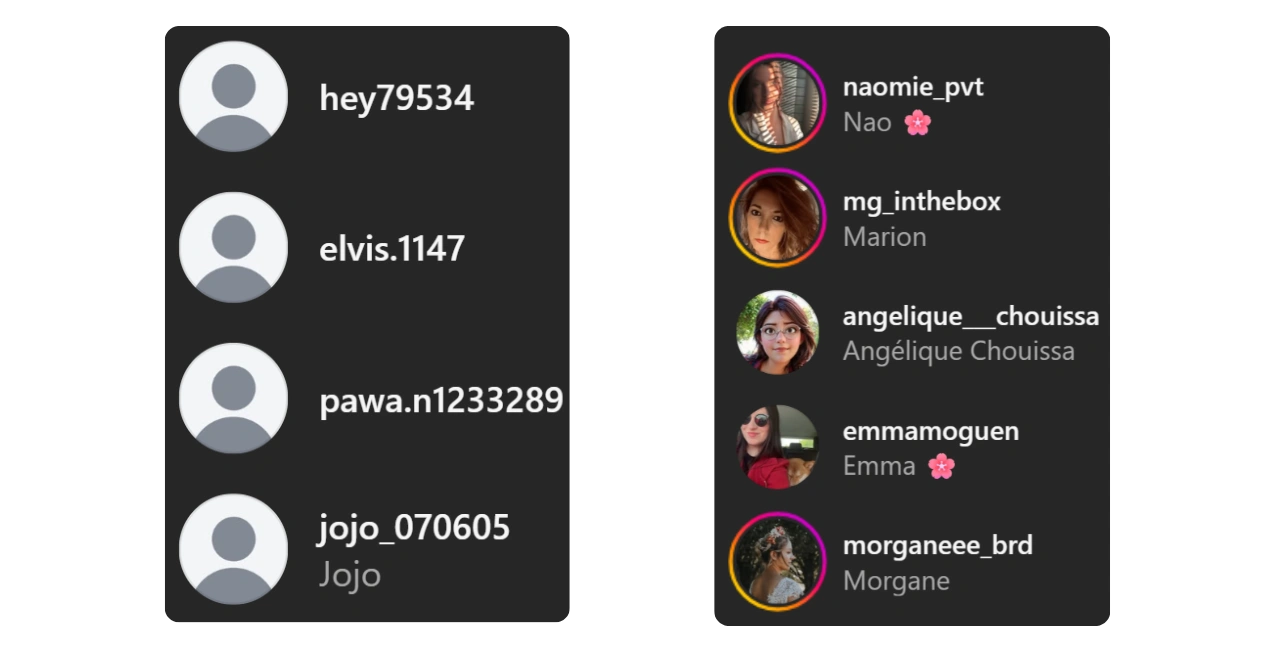
- Keine Beiträge oder sehr wenige Beiträge auf eigene Rechnung
- Ich folge Tausenden von Konten, während mit sehr wenigen Followern sich selbst
Fortgeschrittene Erkennungstechniken
Manueller Auditprozess
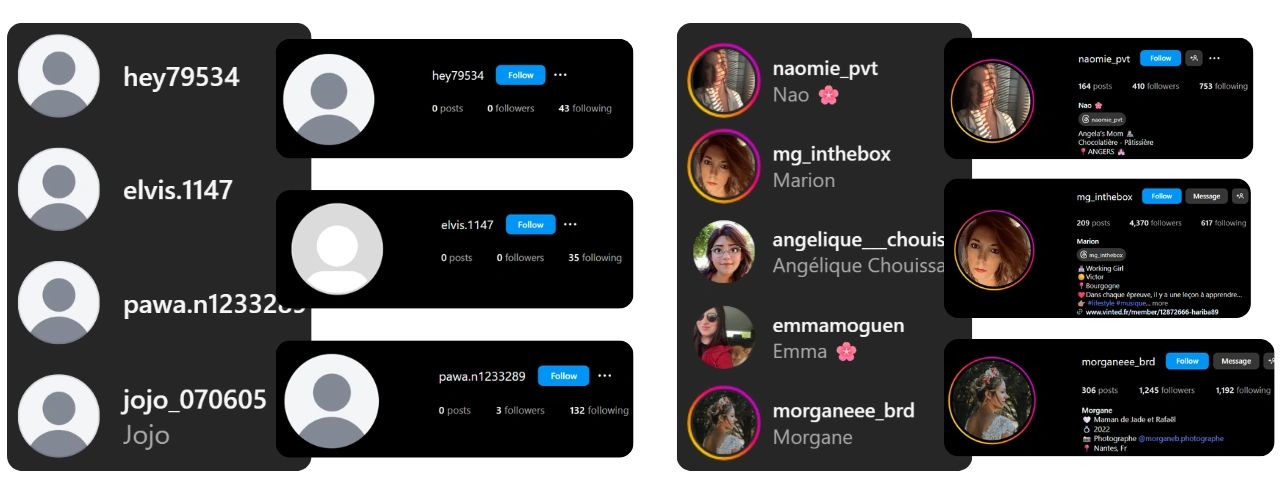
Es ist zwar zeitaufwändig, manuelles Audit bleibt eine der zuverlässigsten Methoden zur Erkennung gefälschter Follower. Beginnen Sie mit einer zufälligen Stichprobe 50-100 Anhänger aus dem Konto eines Influencers und prüfe dessen Profile einzeln.
Achten Sie bei Ihrem Audit auf:
- Profil Vollständigkeit und Authentizität
- Häufigkeit der Beiträge und Qualität der Inhalte
- Interaktionsmuster mit anderen Konten
- Geografische Verteilung der Follower
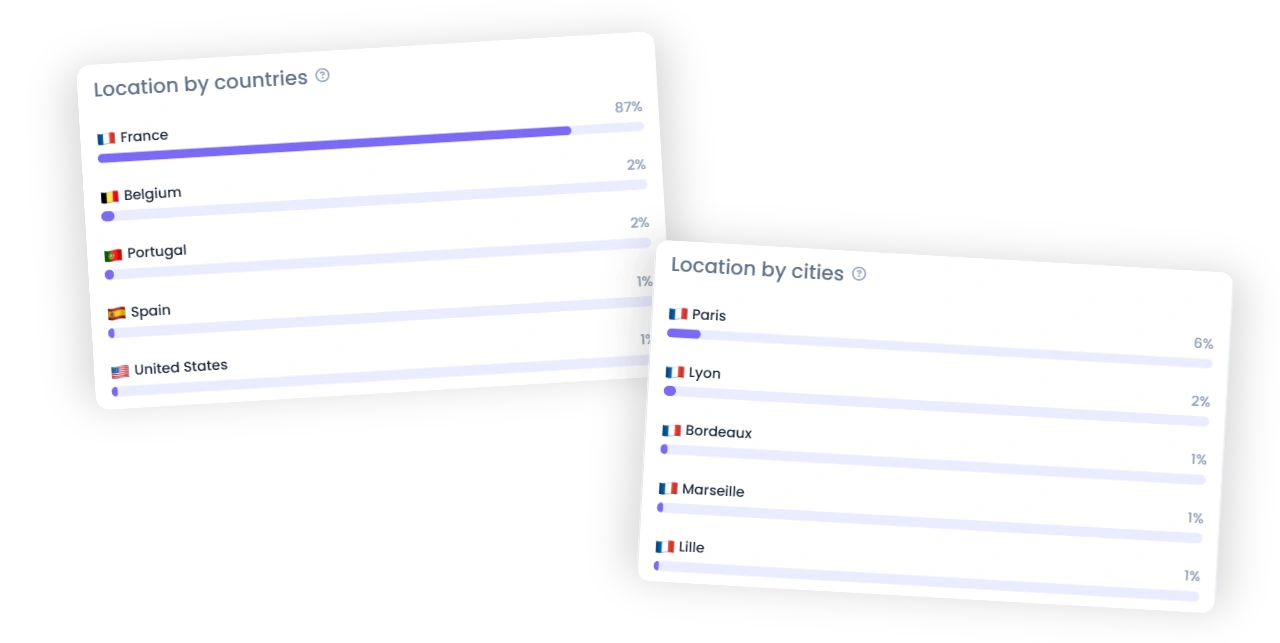
Analyse der Engagement-Qualität
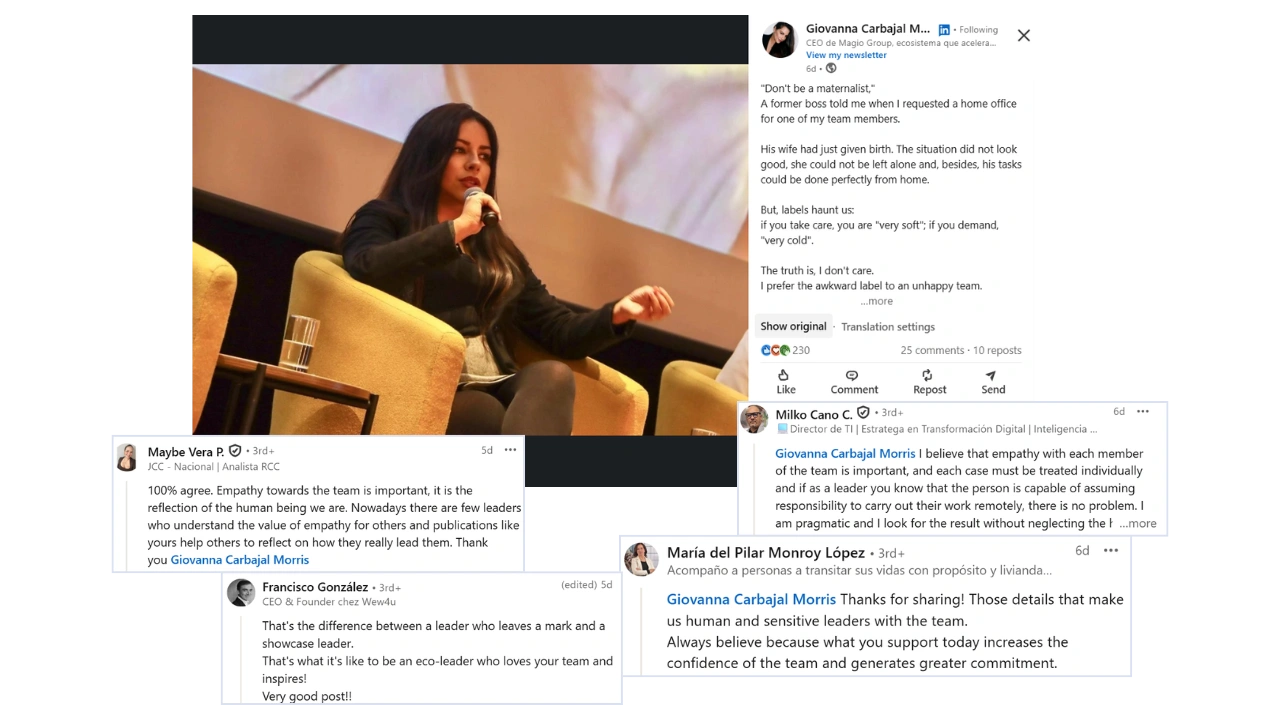
Neben der Quantität ist auch die Qualität des Engagements von großer Bedeutung. Authentisches Engagement beinhaltet in der Regel:
- Spezifisch, kontextuell Kommentare Das beziehen sich auf den tatsächlichen Inhalt
- Fragen oder Gespräche, die demonstrieren echtes Interesse
- Vielfältige Emoji-Verwendung und natürliche Sprachmuster
- Kommentare von Konten mit etablierte Posting-Historien
Professionelle Tools und Plattformen
Branchenführende Erkennungstools
Es wurden mehrere professionelle Tools entwickelt, mit denen Vermarkter falsche Follower und Interaktionen identifizieren können:
FakeCheck.co bietet eine umfassende Analyse der Instagram- und TikTok-Konten mit Risikobewertungen und detaillierten Aufschlüsselungen der Follower-Authentizität. Die Plattform analysiert Interaktionsmuster, demografische Daten von Followern und Kontoverhalten, um potenziellen Betrug zu identifizieren.
Modasch bietet detaillierte Zielgruppenanalysen, einschließlich der Erkennung gefälschter Follower und der Bewertung der Glaubwürdigkeit des Engagements. Ihre Plattform bietet Einblicke in die Demografie der Follower und hilft Marken, fundierte Partnerschaftsentscheidungen zu treffen.
Plattformspezifische Überlegungen
Verschiedene Social-Media-Plattformen stellen die Erkennung gefälschter Follower vor besondere Herausforderungen. Instagrams Die visuelle Natur macht es einfacher, gefälschte Konten zu erkennen durch Profilanalyse, während TikToks algorithmengestützte Entdeckung kann manchmal falsche Verlobungsmuster maskieren.
Facebooks API-Einschränkungen haben die Analyse durch Dritte schwieriger gemacht, wie Branchenanalysten darauf hinweisen „Einschränkungen des API-Zugriffs durch Plattformen wie Facebook erschweren es Tools von Drittanbietern, genaue Daten bereitzustellen.“
Implementierung von Erkennungsstrategien mit Favikon
Die umfassende Influencer-Analyseplattform von Favikon bietet Marketern die Tools, die sie benötigen, um Identifizieren Sie authentische Influencer und vermeiden Sie Fallen falscher Follower. Die fortschrittlichen Algorithmen der Plattform Analysieren Sie Interaktionsmuster, Zielgruppenqualität und Authentizitätskennzahlen um Marken dabei zu helfen, fundierte Entscheidungen zu treffen.
Durch Das Armaturenbrett von Favikon, du kannst:
- Zugriff detaillierte Publikumsanalysen für jeden Influencer
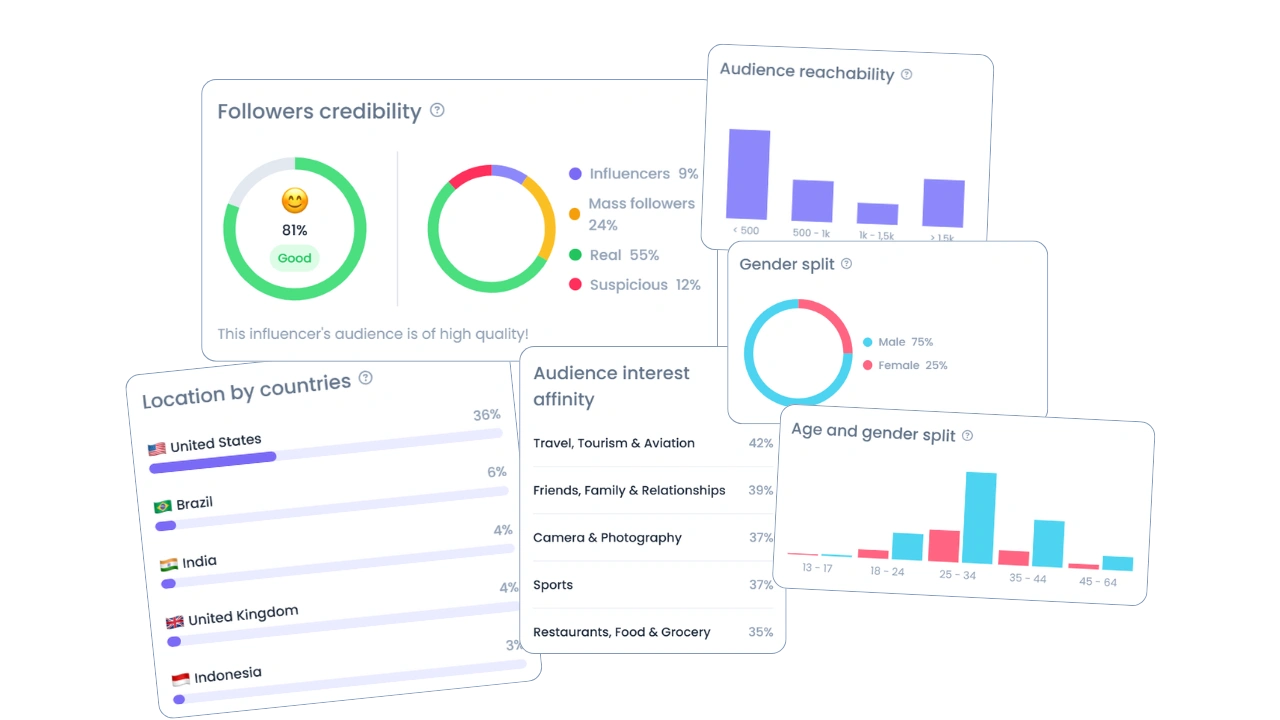
- Identifizieren verdächtig Wachstumsmuster der Follower
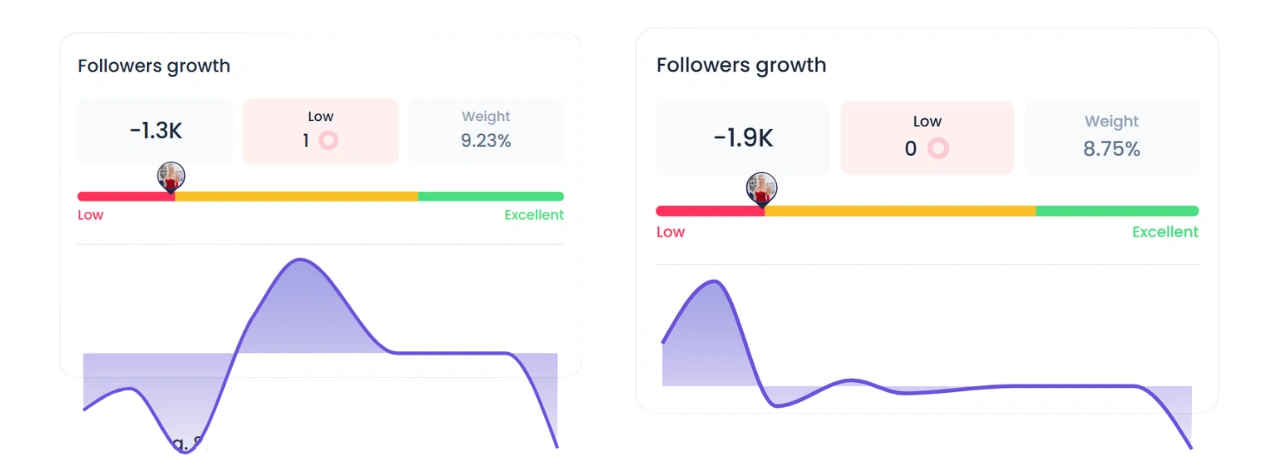
- Generieren Sie umfassend Echtheitsberichte
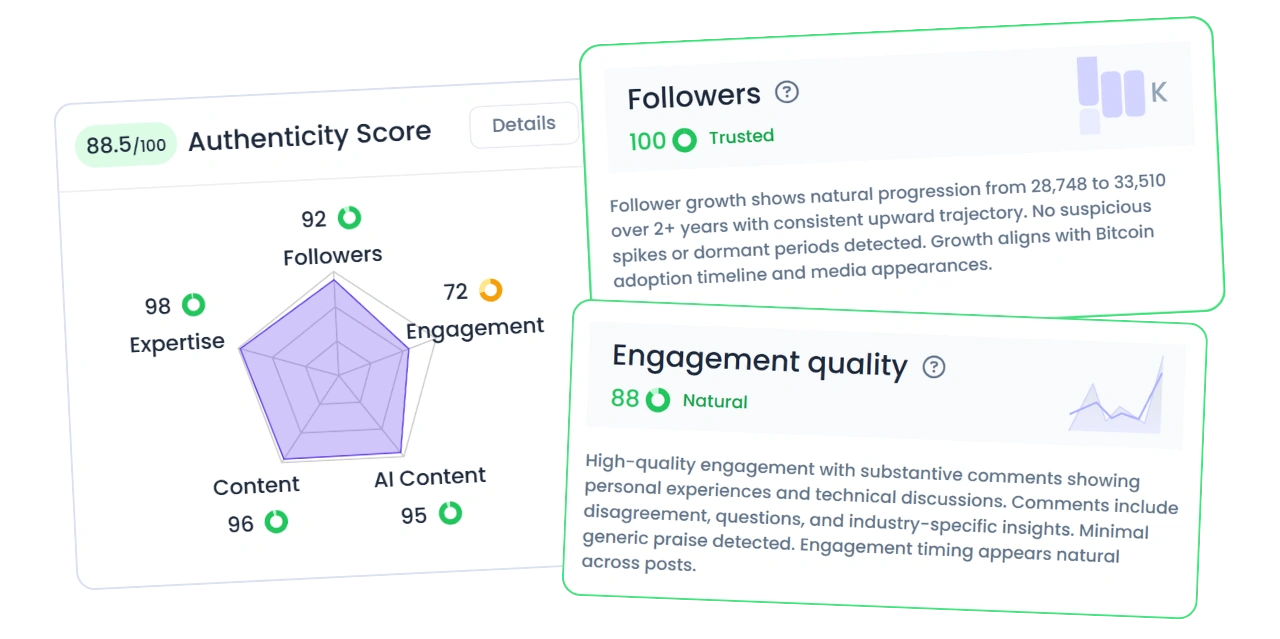
Favikons KI-gestützt Die Analyse geht über grundlegende Kennzahlen hinaus, untersucht die Kommentarqualität, die Interaktionsmuster der Follower und die plattformübergreifende Konsistenz, um ein vollständiges Bild von Authentizität von Influencern.
Bewährte Methoden für die laufende Überwachung
Einrichtung von Verifizierungsprotokollen
Erstellen Sie standardisierte Verfahren zur Überprüfung potenzieller Influencer-Partner. Dies sollte sowohl automatische Werkzeuganalysen als auch manuelle Überprüfungsschritte umfassen. Dokumentieren Sie Ihre Ergebnisse und pflegen Sie eine Datenbank mit verifizierten authentischen Influencern für zukünftige Kampagnen.
Regelmäßige Auditpläne
Führen Sie vierteljährliche Audits Ihrer bestehenden Influencer-Partnerschaften durch. Gefälschte Follower-Käufe erfolgen oft in Wellen, und zuvor authentische Konten können deren Integrität im Laufe der Zeit gefährden. Eine regelmäßige Überwachung trägt zur Aufrechterhaltung der Kampagnenqualität bei und schützt den Ruf der Marke.
Plattformübergreifende Überprüfung
Untersuchen Sie Influencer auf mehreren Plattformen, um Konsistenzen bei der Zuschauerbindung und den Wachstumsmustern zu ermitteln. Authentische Influencer zeigen in der Regel plattformübergreifend ähnliche Interaktionsmuster, während falsches Engagement oft plattformspezifisch erscheint.
Branchendaten und Trends
Aktuelle Branchenuntersuchungen zeigen, welche Trends bei der Prävalenz gefälschter Follower herrschen:
- Instagram sieht ca. 95 Millionen gefälschte Konten erstellt monatlich
- TikToks schnelles Wachstum hat angezogen signifikante Bot-Aktivität, mit einigen Schätzungen schlägt 10-15% gefälschte Konten vor
- LinkedIn, trotz seiner beruflichen Ausrichtung, Erfahrungen falsche Verlobung durch automatisierte Kommentarsysteme
Diese Statistiken unterstreichen die Bedeutung robuster Verifikationsprozesse in Influencer-Marketingstrategien.
Machen Sie Ihre Strategie zukunftssicher
Neue Erkennungstechnologien
Technologien für künstliche Intelligenz und maschinelles Lernen werden immer ausgefeilter, um falsche Follower und Interaktionen zu erkennen. Diese Systeme analysieren Verhaltensmuster, Veröffentlichungszeitpläne und Interaktionsnetzwerke, um betrügerische Aktivitäten mit größerer Genauigkeit als mit herkömmlichen Methoden zu identifizieren.
Initiativen zur Reaktion auf Plattformen
Große Social-Media-Plattformen investieren stark in die Erkennung und Entfernung gefälschter Konten. Die jüngsten Algorithmus-Updates von Instagram priorisieren authentisches Engagement, während TikTok strengere Überprüfungsverfahren für Creator-Konten eingeführt hat.
Fazit
Um falsche Follower und Interaktionen zu erkennen, ist eine Kombination aus manueller Analyse, professionellen Tools und ständiger Wachsamkeit erforderlich. Da die Influencer-Marketing-Branche immer reifer wird, werden Marken, die der Echtheitsprüfung Priorität einräumen, einen besseren ROI erzielen und stärkere, vertrauenswürdigere Partnerschaften aufbauen.
Die Investition in angemessene Überprüfungsverfahren zahlt sich durch eine verbesserte Kampagnenleistung, eine bessere Markenausrichtung und den Schutz vor Reputationsschäden aus. Durch die Implementierung umfassender Erkennungsstrategien und die Nutzung von Plattformen wie Favikon können sich Marketer souverän in der komplexen Landschaft der Influencer-Authentizität zurechtfinden.
Siehe auch 👀
🏆 WIE DU DEINE ERSTE INFLUENCER-KAMPAGNE VON GRUND AUF NEU ERSTELLST
STARTEN UND VERWALTEN SIE INFLUENCER-KAMPAGNEN MIT LEICHTIGKEIT
WIE STUFT FAVIKON INFLUENCER EIN?
Related Articles
See all the articlesUnterstützung











.png)





.png)
